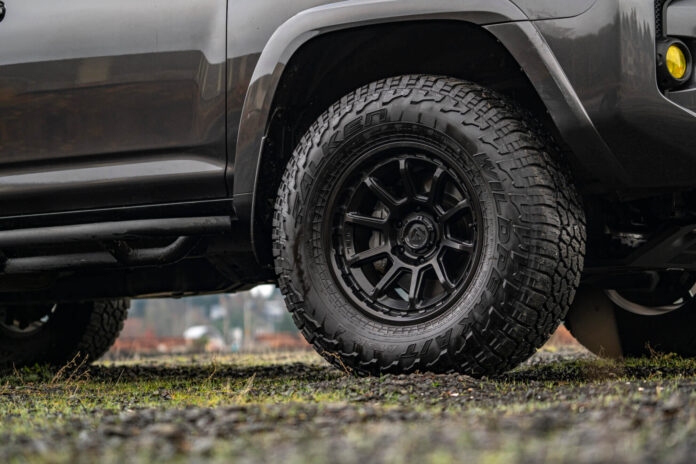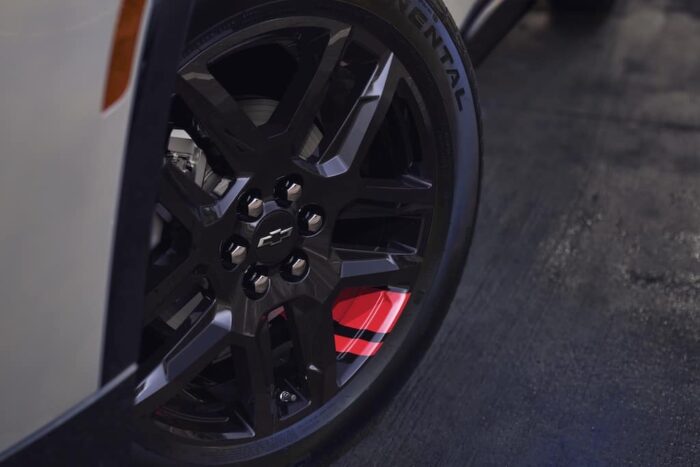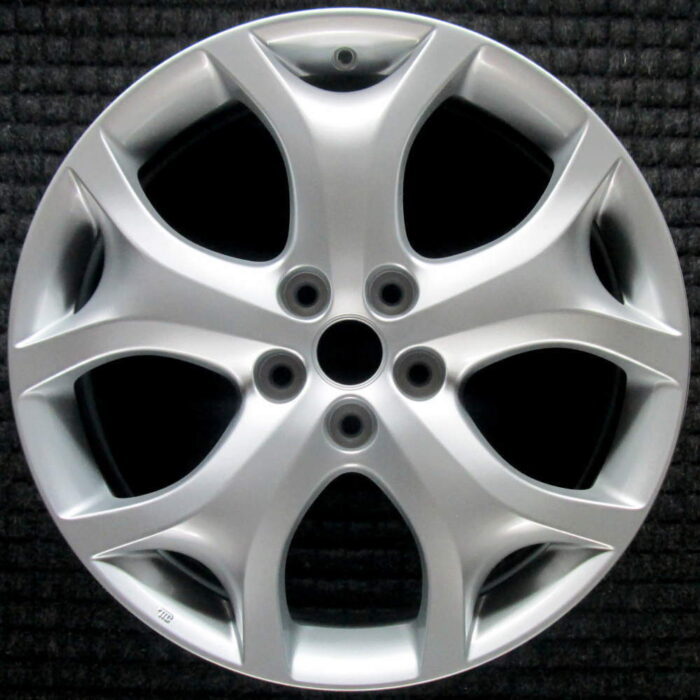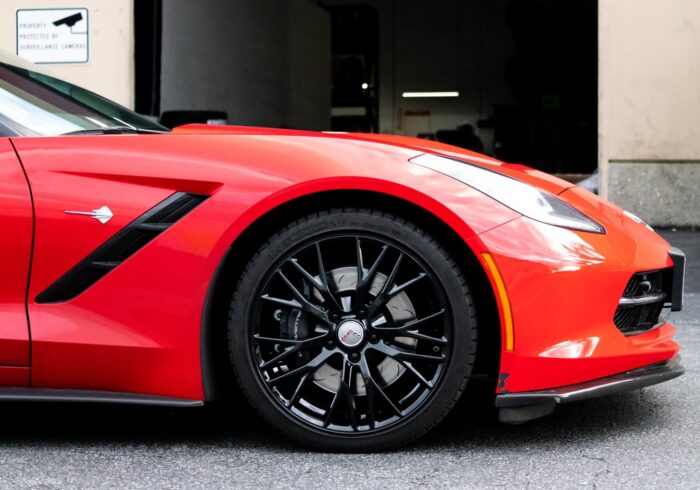
Bolt patterns are critical for ensuring that a wheel and its corresponding vehicle will be compatible. The number of bolts on the wheel, as well as how far apart they are from one another, is what defines this pattern –and it’s crucial to select the correct hub size and shape. If these bolt measurements don’t line up with those needed by your car’s hub, then no matter if the center bore, diameter or offset match -the wheel won’t fit securely.
Accurately measuring wheel compatibility is not only paramount for your driving safety but also affects the vehicle’s performance and handling. Incompatible wheels can cause severe vibrations or even fail while in motion, leading to perilous circumstances on the road. It’s essential that all vehicles be equipped with appropriately sized supply-and-fit wheels.
What Bolt Patterns are There?
The quantity of lugs or bolts in each bolt pattern varies from one vehicle to another. Depending on the car you own, it may come with a 3, 4, 5, 6 or 8 lug bolt pattern fit.
To provide you with a comprehensive overview and to help guide your comprehension, here is an introduction to each type of bolt pattern.
3 lug bolt pattern:
This particular pattern of bolts is rarely found on contemporary or widespread vehicles, making it quite uncommon. You can find this bolt pattern in “vintage” cars, like Citroën 2CV.
4 lug bolt pattern:
Unlike the previous one, this bolt pattern is one of the most frequent, found on an array of cars from compact to sporty coupes and sedans.
5 lug bolt pattern:
This specific bolt pattern is a popular choice among vehicles such as SUVs, trucks, and larger cars.
6 lug bolt pattern:
This bolt pattern is commonplace on a variety of vehicles, including trucks, SUVs and larger models.
8 lug bolt pattern:
This heavy-duty bolt pattern is widely seen on commercial trucks, larger SUVs, and various full-size pickup trucks.
It’s essential to be aware that the lug count within a bolt pattern may vary between various trim levels, options and other related factors on the same vehicle make or model. To confirm your specific vehicle’s exact bolt pattern, you should always refer to its owner’s manual or get in touch with the original car manufacturer.
Are All 5 Bolt Patterns the Same?

The bolt patterns are not universal, meaning that wheels with the same bolt pattern may not fit different vehicles even if they are the same make and model. This is because the bolt pattern is just one of the factors that determine wheel compatibility, and other factors such as center bore, diameter, and offset also play a role.
The main reason why not all 5-lug bolt patterns are the same is quite simple. The distance between the center of each lug can vary, resulting in different bolt patterns. A common 5-lug bolt pattern has a Bolt Circle Diameter (BCD) of 5 x 4.5 inches meaning the lugs are spaced 4.5 inches apart in a circle, while another might be 5 x 114.3mm – lugs spaced 114.3mm apart in a circle.
These two bolt patterns are not interchangeable and wheels with one won’t fit on a vehicle made for the other. It’s important to accurately measure the bolt pattern of your vehicle’s hub and match it to the wheel you’re considering, as an improperly fitted wheel can be dangerous.
Can You Change the Wheel Bolt Pattern?
When modifying the bolt pattern of any vehicle, it is essential to weigh all options judiciously. To guarantee an optimal fit and performance, locating wheels that replicate the original bolt pattern is often a better choice. If uncertain about what solution fits your needs best, seeking professional advice from a mechanic or auto shop can be beneficial.
You can quickly and conveniently modify the wheel bolt pattern of your car by using a wheel adapter. There’s no need to replace the entire wheel; just affix an adapter between your vehicle’s hub and the new wheel, allowing you to attach wheels with disparate bolt patterns without any issues! Wheel adapters are simple, yet effective tools that make it easy for drivers to upgrade their vehicles according to their needs.
It is essential to guarantee that the wheel adapters used are of superior quality and robustly constructed to securely handle the weight and forces of your vehicle. Inferior or incompatible wheel adapters can snap off while driving, thus placing you in a hazardous situation on the road.
Therefore, you must prudently contemplate the advantages and disadvantages of utilizing wheel adapters prior to deciding. Consulting a professional mechanic or auto service for advice is always recommended in order to make sure the wheel adapters are compatible with your vehicle, thus ensuring secure and dependable performance.
Pros & Cons of Changing Bolt Pattern

Changing your vehicle’s bolt pattern can be beneficial, as it grants you access to more suitable wheels, improved clearance between the wheel and brakes, and more rim options. However, it also has some drawbacks such as less aftermarket support, higher costs for custom wheels, and fitment issues due to incompatible parts/hardware. It is important to consider both the pros and cons before making a decision.
Pros of Changing Bolt Pattern
Increased Wheel Options: By altering the bolt pattern on your vehicle, you unlock a plethora of wheel choices. You’ll be able to pick from an abundance of styles and sizes that weren’t previously accessible before.
Improved Performance: From enhanced handling to increased traction, modifying the bolt pattern can often result in improved performance – depending on the type of wheels you select.

Cons of Changing Bolt Pattern
Cost: Replacing the bolt pattern is often an expensive procedure, necessitating the purchase of new wheels and hub to be fitted on your automobile.
Complexity: Any modifications to the bolt pattern should only be performed by competent auto mechanics and professional shops. After all, transforming a bolt pattern is an extremely precise process that requires expertise and experience.
Potential for Vibrations: The additional room created by the adapter may create ripples and vibrations, significantly diminishing your vehicle’s ride comfort and stability.
Decreased Reliability: Installing wheel adapters can put greater strain on the hub assembly and wheel studs, potentially resulting in a breakdown or lack of dependability.
Possible Compatibility Issues: If a wheel’s bolt pattern is altered, it may not be compatible with other components of the vehicle such as the brakes or suspension. This can lead to grave consequences and should not be taken lightly.
Before deciding on altering the bolt pattern, it is essential to investigate all of its possible pros and cons. To guarantee that your vehicle undergoes this procedure under secure conditions, you should talk to an expert auto mechanic or a professional shop for useful advice. In conclusion, changing the bolt pattern can have both positive and negative results – so consider carefully before proceeding.
















